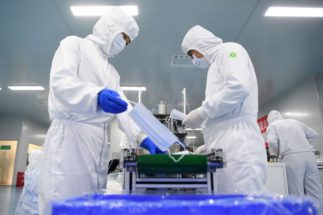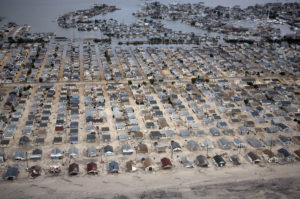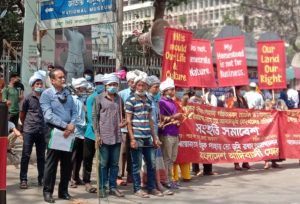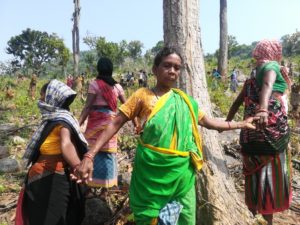In August last year the World Health Organization declared Latin America and the Caribbean the global epicentre for Covid-19. The region comprises about 8% of the world’s population and has reported the loss of nearly 800,000 lives, with a recent tally giving it the second-highest number of fatalities after Europe.
The numbers are still rising. In a report quietly released by the Mexican government at the end of March, authorities acknowledged that the death toll in the region’s second-largest economy has been at least 60% higher than officially reported.
A devastating second wave of the virus is currently hitting Chile, despite it having one of the world’s highest vaccination rates. On March 21 the country recorded 7,084 cases in a single day, its highest number since the beginning of the pandemic. A third wave in Colombia, where registered cases have reached 10,000 per day, has returned the capital, Bogotá, to lockdown. Meanwhile Brazil’s hospital system is nearly saturated as daily deaths now account for a quarter of all global Covid-19 fatalities.
Health policy analyst Xavier Tello says there are concrete reasons for this.
“In Latin America, we have lacked the strategy and also the money,” he told Diálogo Chino.
“Let’s face it, we haven’t done a very good job. Brazil and Mexico, the biggest economies in Latin America, have the most turbulent presidents. They denied the use of face masks, they were reluctant to pass on the emergency message. And we have lacked testing,” he said.
Exorbitant infection and death rates along with a lag in aid from the US made vaccine development and distribution even more urgent. Enter China and Russia, who promoted their vaccines to Latin American partners as soon as mass vaccination became possible.
800,000
Lives have been lost due to Covid-19 in Latin America and the Caribbean
As the region cries out for vaccines, health cooperation has revived relations between Mexico and China and the vaccine has become a conduit for a greater Chinese presence throughout Latin America.
Chinese vaccine hits Mexico and beyond
In February, Mexico became the first country in the world to approve the Convidecia (Cansino) vaccine for emergency use, receiving a shipment of 2 million doses. Cansino vaccines have also been produced within Mexico. The North American country ranks as the country with the third highest Covid-19 death count in the world. It has also approved the CoronaVac/Sinovac vaccine, with 2 million doses delivered in February and March.
In the latest edition of national banking sector magazine Revista Comercio Exterior, Mexico’s ambassador to China José Luis Bernal highlighted the importance of the two countries’ relationship, a link that “has been evident in the actions undertaken between the two countries to face the health emergency and address the systemic consequences of the pandemic.”
“Since the beginning of the pandemic, collaboration has been confirmed at the highest level”, wrote Bernal, citing “the purchasing – in China – of essential medical supplies for Covid-19 patients in Mexico, and the repatriation of Mexicans who had no commercial flight options to return to our country”, as well as vaccine transportation.
Mexico and China’s cooperation on healthcare has grown out of their long-standing trade relationship. As Bernal noted: “China has been one of Mexico’s main trading partners and the first among the Asia-Pacific countries” and “is the second source of imports and the third destination of Mexican exports”. Meanwhile, Mexico is among the top eight export markets for China, he wrote.
Across Latin America, three Chinese vaccines are available: Convidecia by Cansino Biologics (approved in Mexico); Vero by Sinopharm (approved in Argentina); and CoronaVac by Sinovac (approved in Mexico, Brazil and Chile). Cansino requires only one dose, whereas the Sinovac and Sinopharm vaccines require two.
Of all the vaccines available worldwide, Sinopharm has been the most distributed in Latin America, with 1,904,000 doses delivered. Chile, another close ally of China, has rolled-out the Sinovac vaccine with particular energy, one third of the population has received at least one shot, mostly of the Sinovac jab.
It is urgent to apply the vaccine on a massive scale in the shortest possible time in order to reduce the possibility of the new variants
Tello said the availability of Chinese vaccines appealed to Latin America: “Obviously Pfizer, AstroZeneca and Moderna are the top, most expensive vaccines, and they’re not very easy to get”.
The Sinovac and Sinopham vaccines are composed of inactivated virus material. Many common vaccines for other viruses, such as influenza, work in a similar way.
By comparison, Cansino’s is a viral vector vaccine, one that works by using an attenuated flu virus to deliver Covid-19 genetic material into the cells of the recipient, and thereby generating an immune response against the virus.
Beyond availability, China’s efforts at providing vaccines to developing countries, largely in Latin America and Africa, has included support for the “cold-chain infrastructure” required to transport the vaccines for distribution.
Edda Lydia Sciutto Conde, a researcher in the department of biomedicine at Mexico’s National Autonomous University, explained that handling and storage are key issues for Latin America.
“I believe that for Latin America the most important characteristic of the vaccine, given that all of them have a high efficiency, particularly to prevent severe forms of the disease, is that it can be kept refrigerated. We have experience with this type of network in Latin America to handle them properly and [that] will allow their distribution and … application.” she said.
Chinese vaccine provision and support for infrastructure is a trend experts are calling ‘vaccine diplomacy’. US-based political and trade commentators have suggested that China, as well as Russia, is taking the opportunity to build soft power in developing countries.
Tello said: “I think that if China would like they could get some very good political or commercial trade out of this, leveraging their vaccination power”.
A plethora of experts and opinion pieces have coalesced around the idea that China is looking to improve its image on the world stage through the vaccination campaign, while at the same capitalising on the US’ retreat from Latin America.
However opportunistic “vaccine diplomacy” may seem, China-Latin America health cooperation frameworks predate the pandemic. Chinese Ministry of Foreign Affairs policy papers issued in 2008 and 2016 pledge to cooperate with Latin America and the Caribbean disease control and in response to public health emergencies.
China committed to “help Latin American and Caribbean countries train medical personnel and improve medical facilities, send medical teams to these countries, and stand ready to provide assistance within its capacity for the prevention and control of sudden outbreak of infectious diseases”, the 2016 paper says.
Elites jump the queue
There have already been a number of political scandals in the region related to political and economic elites accessing the vaccine ahead of ordinary citizens.
As reported by Al-Jazeera in February, two ministers in Peru and one in Argentina resigned that month after revelations that they had taken advantage of preferential access to the vaccine for themselves and their families.
In Ecuador, the health minister stepped down after criticism over his decision to send part of the country’s first shipment of vaccines straight to a retirement home where his mother and other relatives live.
In Brazil, over 4,700 reports denouncing queue-jumpers have been filed to public prosecutors’ offices across the country.”
As in many regions, Latin Americans have expressed concerns about the effectiveness of any vaccine in preventing infection and the protection they offer against new strains remains to be seen.
But Sciutto said the vaccination programme is safe and needs to make progress. Without vaccines, whichever they may be, thousands of people will continue to get sick and many will die as new strains arrive and infection numbers rise amidst an already saturated health system.
“It is urgent to apply the vaccine on a massive scale in the shortest possible time in order to reduce the possibility of the new variants spreading in the population and aggravating the pandemic,” Sciutto said.








